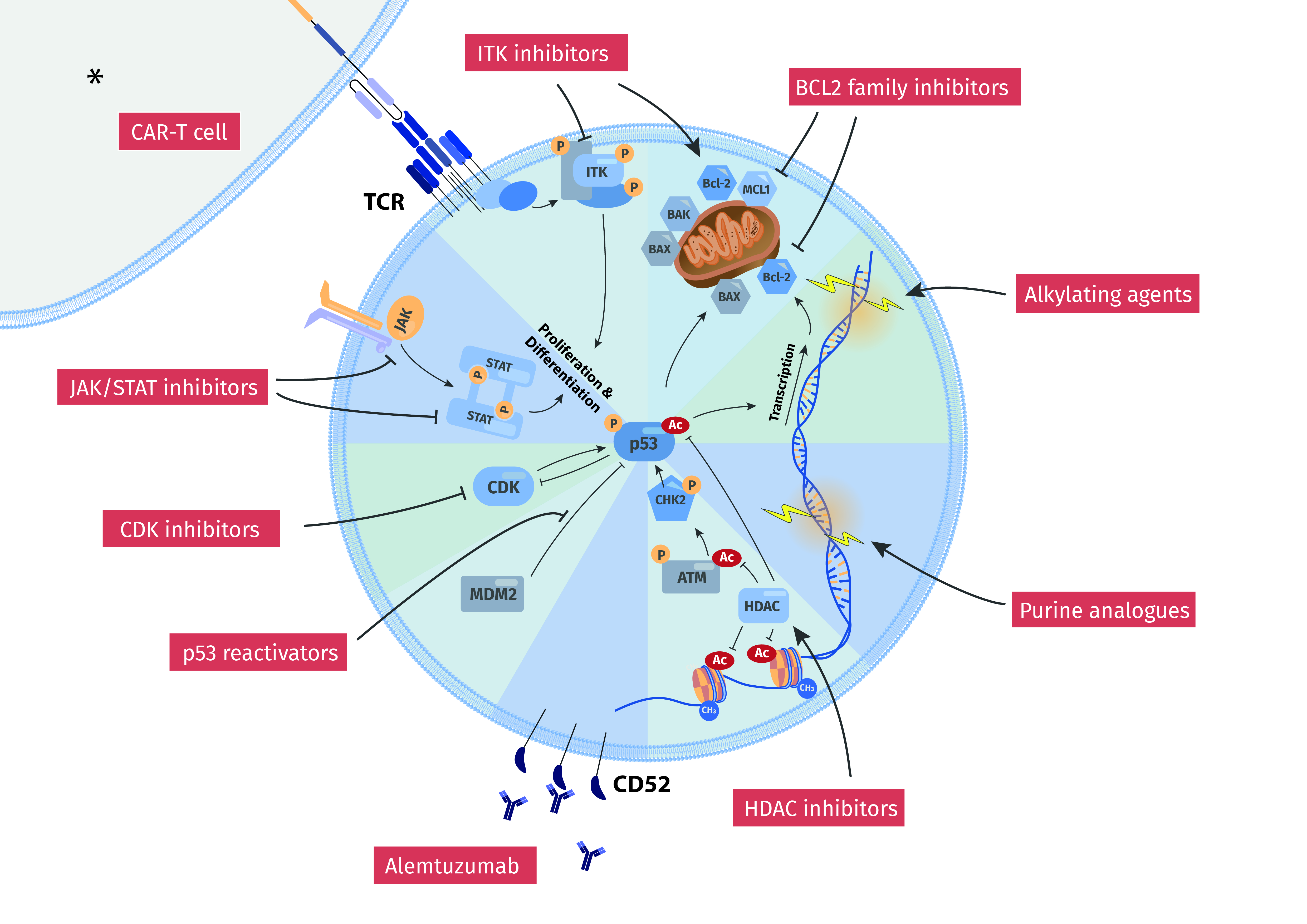A systematic approach to diagnosis of mature T-cell leukemias reveals heterogeneity among WHO categories
Abstract:
The current World Health Organization (WHO) classification of hematopoietic malignancies defines several types of mature T-cell leukemia including T-cell prolymphocytic leukemia (T-PLL), Sezary syndrome (SS), and T-cell large granular lymphocytic (T-LGL) leukemia. These neoplasms can show overlapping features with each other and with T-cell lymphomas involving peripheral blood (PB). We analyzed the spectrum of clinicopatho-logic features in 102 mature T-cell leukemias and compared them to 10 hepatosplenic T-cell lymphomas that involved PB. T-PLL, defined as a T-cell leukemia showing rapidly rising PB lymphocyte counts, was the only tumor type expressing the oncoprotein TCL1 (71% of cases) and could present with relatively low lymphocyte levels or small tumor cell morphology. SS, defined by accompanying erythrodermic skin disease, was frequently associated with peripheral eosinophilia but could also develop high numbers of prolymphocytes, especially late in the disease course. T-LGL leukemia, defined by accompanying cytopenias or autoimmune phenomena (or both), had the best clinical outcome and generally showed the lowest circulating lymphocyte levels with only a few cases developing marked lymphocytosis. Using the dominant clinical or phenotypic feature, we describe here the degree of overlap among currently recognized WHO categories and identify areas where further clarification is needed. Our results indicate that incorporation of additional criteria, such as TCL1 expression status and hematologic parameters, can assist in a more accurate classification.













